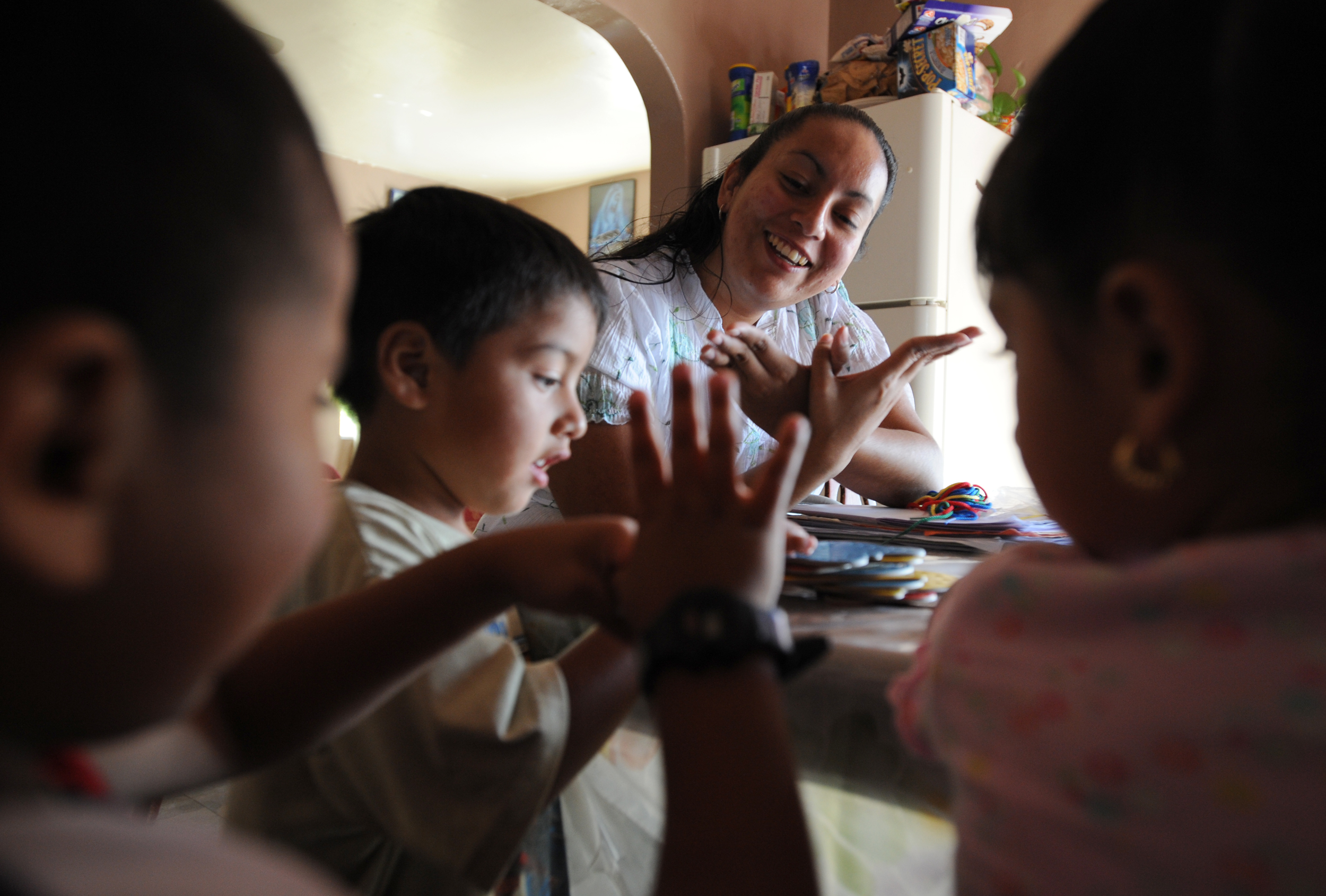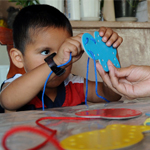Building blocks of learning

Building blocks of learning
- September 30, 2008
- HABLA program prepares toddlers for kindergarten and beyond
 Four-year-old Lupe Velasquez grabs the Legos scattered across his kitchen table, slowly
but confidently naming the colors of the individual blocks - green, yellow, red.
Four-year-old Lupe Velasquez grabs the Legos scattered across his kitchen table, slowly
but confidently naming the colors of the individual blocks - green, yellow, red.
"What color is this?" asks recent UC Irvine graduate Noemi Maldonado, pointing to
an orange block. "It's the same as a fruit you love to eat."
Lupe and Maldonado meet twice a week to read books and work on colors, shapes, vocabulary
and memorization.
Lupe takes the Legos and meticulously stacks them, smiling as the blocks take the
shape of one of his favorite animals.
"Look, it's a duck!" Lupe cries to his mom, Maria de los Angeles Gil, who helps Maldonado
with the lesson.
"Before this, he didn't talk that much," she says. "Now he talks more, especially
when people visit."
Building verbal skills is one of the main goals of the HABLA program - an acronym
for Home-based Activities and Building Language Acquisition - founded and directed
by cognitive sciences professor Virginia Mann. The program trains home visitors to
help Orange County's Spanish-speaking parents prepare their toddlers for kindergarten.
The program coaches parents to read and play with their children outside of the weekly
home sessions, incorporating lessons into their daily lives.
The program, created in 2000 in Santa Ana, has grown to serve more than 1,000 families
in areas including Anaheim, Garden Grove and Tustin.
According to Mann, children in professional families hear roughly 300 more words per
hour than children in poor families. By age 5, this translates into a difference of
more than 30 million words.
"We want to optimize the language environment to help children learn," Mann says.
"Success in school depends on children learning a rich language before they enter."
HABLA - meaning speak' in Spanish - achieves this by encouraging parents to speak
and read to their children in their native language of Spanish. The idea is that children
who are proficient in their home language will be better equipped to pick up English
in school. The program also teaches math and science fundamentals, such as categorizing
and grouping by colors and shapes.
"We use books and toys as a way of encouraging high-quality conversations," Mann says.
"We urge parents to help their children make connections between their surroundings
and what they read in books. We give them Spanish-language versions of the same books
that many children will encounter in English once they enter school."
Gil says she applies Mann's philosophy during visits to the local park with her son,
pointing at trees, passing cars and even stop signs, describing their colors and shapes.
Maria Gallegos of Anaheim says she notices a difference in daughter Karol Andrea's
behavior since she started HABLA five months ago.
"She's very observant now," Gallegos says of her 4-year-old. "Before, she would just
ignore things around her. Now, she pays attention."
Karol's home visitor, Josefina Vallin Amirzadeh, says her goal is to challenge parents
and youngsters to go beyond what they are supposed to know. "I never limit them,"
she says, "and they shouldn't limit themselves."
Researchers at the Brookings Institution, a nonprofit public policy organization based
in Washington, D.C., will conduct a five-year evaluation of HABLA, assessing the program's
influence on parent behavior, language development, and math and reading skills. Mann
says the program can be adapted in other immigrant communities in California and beyond.
--Laura Rico, University Communications
Link to campus-wide feature: http://uci.edu/uci/features/feature_habla_080922.php
Share on:




connect with us